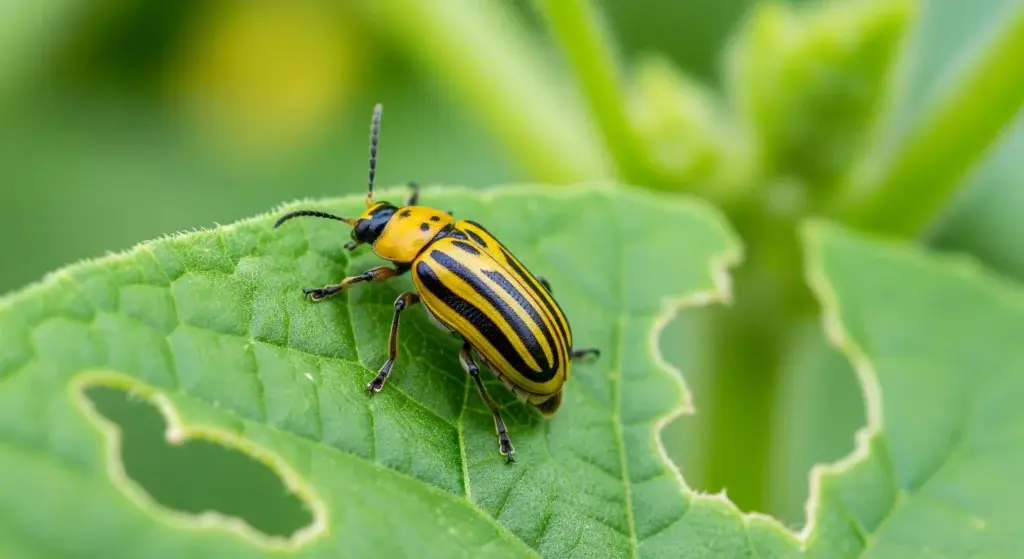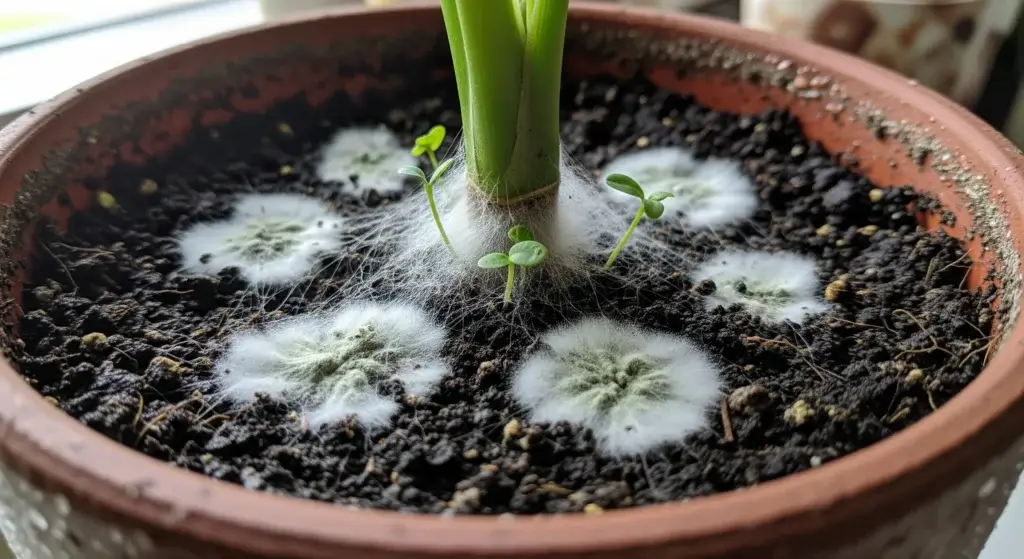
The Irish Potato Famine of the 1840s killed off more than a million people and another million moved away-all because of a sneaky, microscopic villain known as Phytophthora infestans, aka the potato late blight fungus. Crazy part? This little menace is still wreaking havoc in potato fields to this very day, costing billions to farmers each year.
If you grow potatoes—whether it’s a backyard patch or a full-blown farm—you’ve got to know your enemy. Late blight can turn a healthy field into mush in just a few days if the weather’s right. In this guide, we’ll break down how to spot it, what helps it spread, and how to fight back before your spuds become compost.
What Is Potato Late Blight Fungus?
Potato late blight comes from Phytophthora infestans—a weird little organism that acts like a fungus but is actually closer to algae. Yeah, nature loves plot twists. That detail matters because it changes how we fight it—normal antifungal tricks don’t always work.
The Science Behind the Pathogen
This thing? Oh, it absolutely thrives when the weather’s all chilly and damp—the sort of days when plants look like they’re chilling but, honestly, trouble’s brewing behind the scenes. It spreads by chucking out these microscopic spores called sporangia, which just float around on the breeze like little troublemakers. One sad, sick potato? Yeah, that can unleash a ridiculous number of spores—think, hundreds of thousands—suddenly every potato in the neighborhood is in danger. And let’s not pretend tomatoes are safe. Nope, they’re right there on its hit list too. So, if you’re growing both together, well, good luck. You’re basically throwing a party and sending chaos the invite.
Historical Impact and Modern Significance
Back in the 1840s, it sparked the Irish Potato Famine, one of history’s biggest agricultural disasters. But it’s still out here, wrecking crops and causing around $6.7 billion in global losses every year. Humid, mild regions are its playground—but honestly, no potato patch is totally safe.
Recognizing the Symptoms of Late Blight
Catching late blight early is like spotting smoke before your house catches fire—it can save your whole crop. This disease hits every part of the potato plant, and knowing the signs means you can act fast.
Foliar Symptoms
The leaves are the first to spill the tea. You’ll see dark, soggy spots that start near the tips or edges, spreading fast into ugly brown patches with a yellow halo. When it’s humid, the undersides grow a creepy white fuzz—that’s the blight’s spore factory. Within just a few days, leaves blacken and die like something out of a plant horror movie.
Stem Symptoms
Stems don’t escape either. They get black streaks, collapse, and sometimes start to rot and smell like death itself.
Tuber Symptoms
Here’s where your budget takes a real punch to the gut. Potatoes start showing these ugly purple-brown spots, and if you slice one open? Boom—there’s this gross reddish-brown rot just oozing through. And then, of course, bacteria just can’t resist—they jump in and turn your potatoes into straight-up sludge. Sometimes those sneaky tubers don’t even look bad when you pick ‘em, so yeah, you better check them like your life depends on it before tossing them in storage. No shortcuts unless you want a slimy, stinky surprise later.
Environmental Conditions That Favor Late Blight
Late blight doesn’t just show up out of nowhere—it waits for the perfect weather drama to make its move. Knowing when those conditions hit can mean the difference between a healthy crop and total disaster.
The Perfect Storm for Late Blight
Man, this nasty bug loves it when things get chilly and damp—like, we’re talking 65°F (18°C), prime real estate for Phytophthora infestans. Crank the humidity past 90%, toss in some leftover rain or overwatering, and guess what? You’ve basically rolled out the red carpet for a blight blowout. Let the weather stay wet and cool for a few days, and dude, this stuff spreads like rumors in a high school hallway.
Forecasting Late Blight Risk
Farmers now use smart tools like Blitecast and SimCast, which act like weather apps for potato disease. They crunch data on temperature, humidity, and plant conditions to warn when blight might strike. Local alert systems also drop region-specific warnings, helping growers spray smarter, not harder, and avoid wasting chemicals when they’re not needed.
Prevention Strategies: Your First Defense
Preventing late blight is way easier than fighting it once it’s everywhere. Think of prevention like locking your doors before a storm—small habits now save you heartbreak (and potatoes) later.
Cultural Practices
Implementing proper cultural practices creates an environment less favorable for disease development:
- Crop rotation: Do not plant potatoes or tomatoes in the same place for at least 3–4 years. keeps the nasties from building up.
- Resistant varieties: Choose varieties that actually fight back, such as ‘Defender’, ‘Sarpo Mira’, or ‘Kiebitz’. They won’t make blight impossible but give you a serious head start.
- Proper spacing: Give plants room to breathe. Crowded plants stay wet longer and invite trouble. Consider stuffing a bunch of sweaty people into a tiny tent—bad vibes.
- Irrigation management: Employ drip irrigation and avoid overhead sprinklers. Water early so leaves dry by evening. Wet nights = blight’s happy hour.
- Sanitation: Pull out volunteer potatoes and burn or bury cull piles. Those leftovers are basically blight Airbnb.
- Certified seed: The material should always be disease-free certified seed potatoes. It’s like buying clean ingredients before you cook—don’t start with rotten stuff.
Field Monitoring
Regular field inspections are crucial for early detection:
- Scout fields at least twice a week during risky weather—catching blight early is everything.
- Check low spots where water pools; blight loves puddles.
- Look under leaves for early signs—that’s where it hides.
- Use mobile apps and local reports so you know if blight is nearby—knowledge is your alarm system.
Protective Fungicide Programs
When conditions favor late blight development, protective fungicide applications may be necessary:
- Contact fungicides: Chlorothalonil, mancozeb, and copper-based products all provide a protectant barrier on leaf surfaces. Think of them like an umbrella for your plants.
- Systemic fungicides: things like metalaxyl, cymoxanil, or fluazinam, can move inside the plant and protect or sometimes cure early infections. They’re the internal medicine.
- Application timing: Start before you see disease, especially when forecasts say “wet and cool.” Waiting is asking for trouble.
- Rotation strategy: Switch modes of action so the blight doesn’t evolve resistance—variety is a good thing here.
- Coverage: Spray thoroughly—undersides of leaves too—because missed spots are where the problem grows.
Managing Active Late Blight Infections
Even with all the right moves, late blight can still sneak in—it’s relentless like that one mosquito that just won’t quit. The key? Act fast. Every hour counts once you spot it.
Immediate Response Steps
When late blight shows up in your field, it’s go time:
- Intensify fungicide applications: Step up your sprays and switch to products with curative power. Think of it like taking stronger meds when the flu hits harder.
- Improve coverage: Make sure you’re soaking every leaf, top to bottom. More water volume = better protection. No half-sprays here.
- Remove infected plants: If your patch is small or organic, pull out and destroy the infected ones. It’s brutal but necessary—kind of like kicking out a zombie before they bite everyone else.
- Adjust irrigation: Ditch the sprinklers and avoid keeping leaves wet. The less water sitting around, the harder it is for blight to spread.
- Monitor adjacent fields: Don’t let your guard down—check nearby potato and tomato crops too. Blight doesn’t respect boundaries.
Harvest Timing Considerations
If blight hits close to harvest, you’ve still got options:
- Vine kill: Cut or destroy the vines about 2–3 weeks before harvest. That breaks the pathogen’s bridge from vine to tuber.
- Delay harvest: Give the tubers time to toughen up their skins after vine kill—it’s like letting armor harden before battle.
- Careful handling: Be gentle when digging—cuts and bruises are open doors for infection.
- Immediate sorting: Toss out any infected spuds before they hit storage. One rotten potato will take down the rest.
Storage Management
Storage is where a lot of people slip up—don’t be that person. Keep it clean and cold:
- Temperature: Hold between 38–40°F (3–4°C)—chilly enough to slow the fungus, but not freeze the potatoes.
- Ventilation: Keep air moving to stop moisture from building up; condensation is basically blight’s playground.
- Monitoring: Check regularly and remove any suspicious-looking tubers ASAP.
- Separation: Never mix potatoes from infected fields with clean ones. Cross-contamination ruins everything faster than a group project gone wrong.
Organic and Sustainable Management Options
If you’re all about growing potatoes the natural way—no harsh chemicals, just smart, sustainable moves—you’ve got options. Fighting late blight organically isn’t easy, but it’s totally doable with the right combo of biology, brainpower, and patience.
Biological Control Agents
Nature’s got its own defense squad, and scientists are finding ways to put them to work:
- Bacillus subtilis: Some strains of this friendly bacteria can hold late blight back. It’s like sending tiny bodyguards to patrol your potato leaves.
- Trichoderma species: These helpful fungi are the “good neighbors” that push Phytophthora out of the neighborhood.
- Compost teas: When brewed right (not that stinky bucket stuff), compost tea can boost your plants’ immune system.
Botanical and Mineral Fungicides
Even organic growers have tools—just more eco-friendly ones:
- Copper-based products: Copper sulfate, hydroxide, and similar mixes can protect leaves from infection. Think of it as plant sunscreen that blocks blight instead of UV rays.
- Potassium bicarbonate: It’s mild but useful for early-stage prevention. Basically, the gentle nudge before you need to bring in the big guns.
- Plant extracts: Some essential oils and plant-based sprays can slow down blight, though how well they work depends on the mix and timing. It’s still part science, part art.
Host Resistance and Breeding
The real game-changer? Breeding potatoes that can stand their ground. Researchers are working nonstop to develop varieties with natural resistance to late blight—some of them are already impressively tough. None are totally immune (no superhero spuds yet), but these varieties can cut down your need for sprays big time. It’s sustainable farming in action—less chemistry, more clever genetics.
Conclusion
Late blight is still one of the toughest enemies in farming—but it’s not unbeatable. Winning the battle takes brains, timing, and teamwork between good habits and smart science.
Here’s the deal: prevention is everything. Start strong with resistant varieties and smart growing practices before blight even shows up. Early detection is your next best weapon, and it can save your whole crop. And remember, no trick works alone. Mixing methods—like crop rotation, scouting, and fungicide timing—keeps you ahead of the disease.



